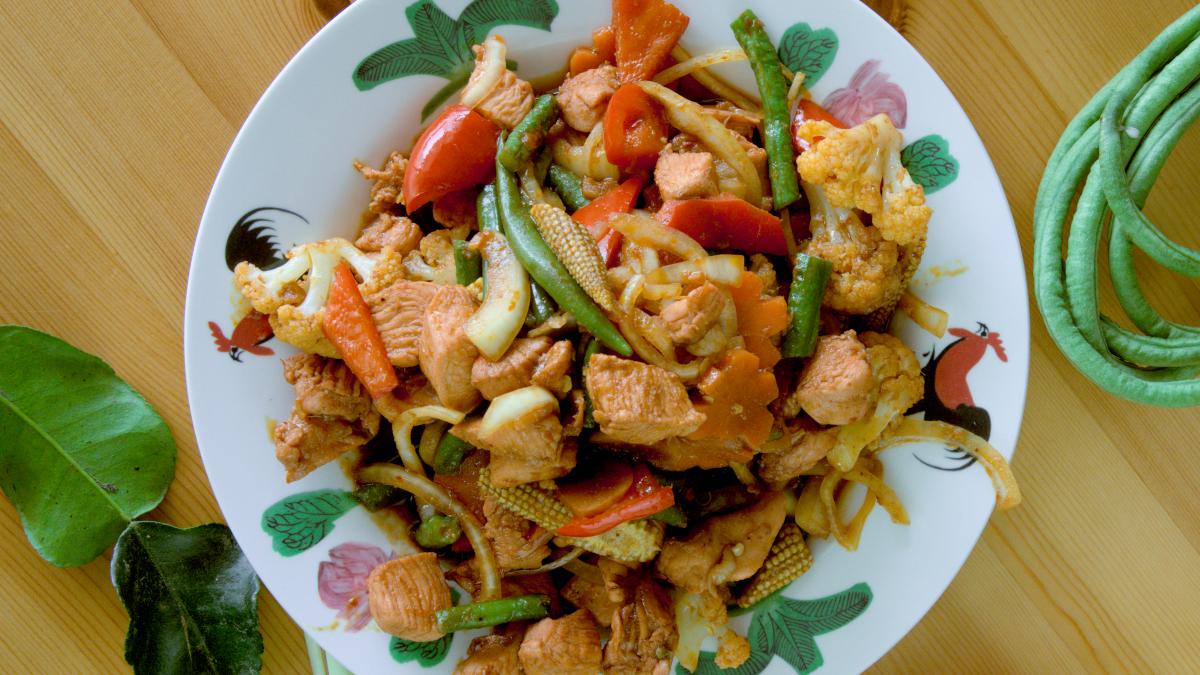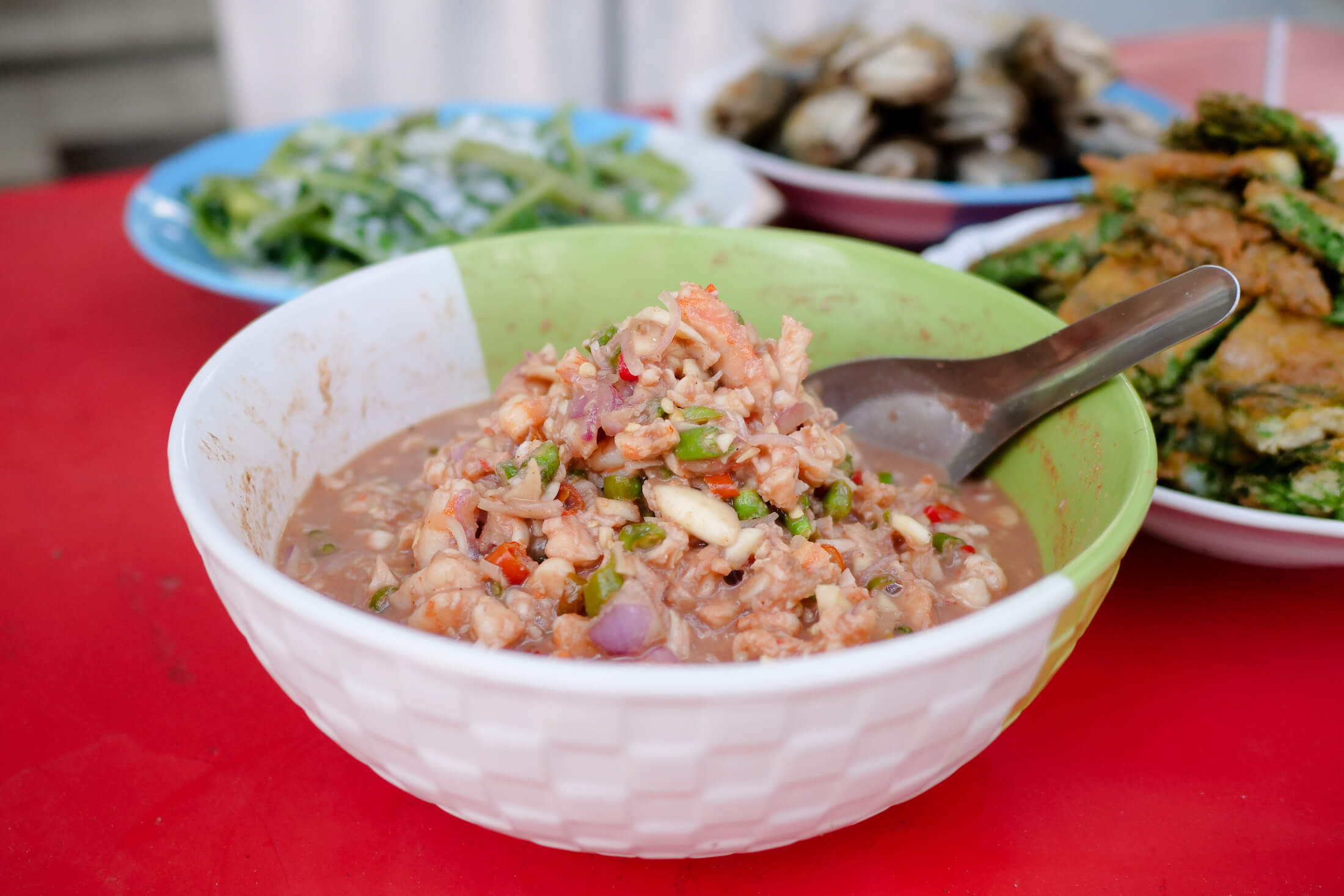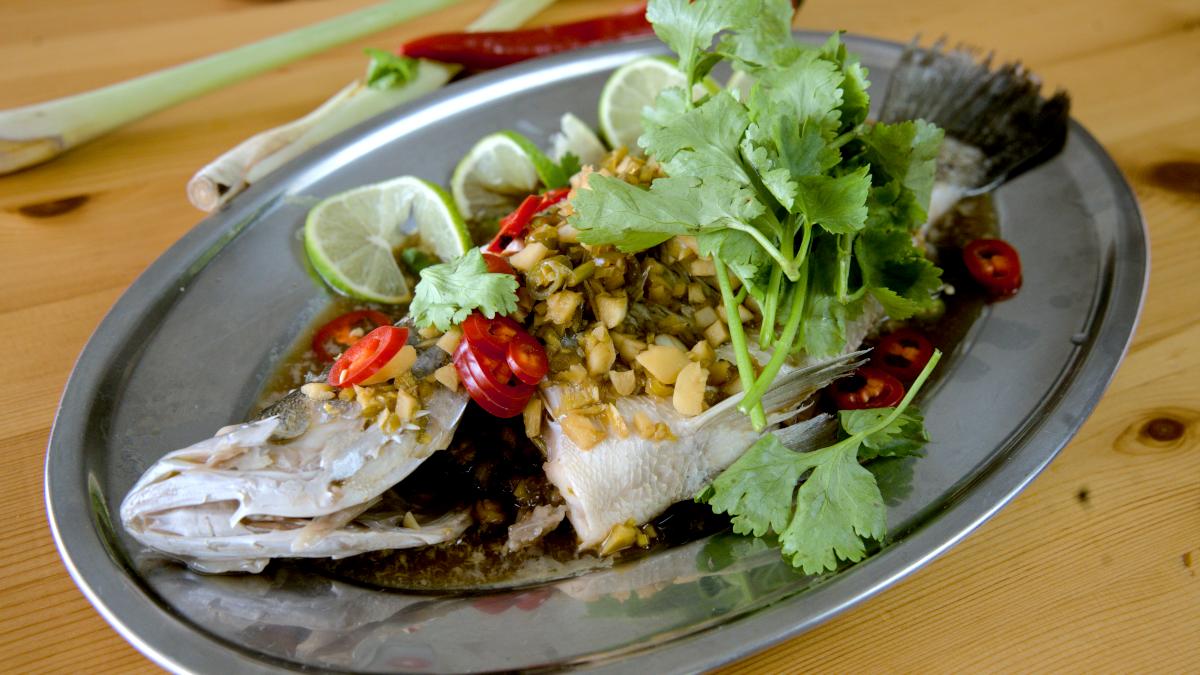You’ll adore this Thai vegetable stir-fry, bursting with garlicky flavor, crisp-tender textures, and a delightful blend of spicy, sweet, and savory notes.
This dish is quick and easy to prepare, and the unique flavors of Thai fish sauce and Golden Mountain Sauce will transform your perception of vegetable stir-fry forever!
Thai-style vegetable stir-fry, known as Pad Pak Ruam (ผัดผักรวม), bears similarities to Chinese vegetable stir-fry. However, the addition of fish sauce and Golden Mountain sauce imparts an authentic and unmistakable Thai flavor.
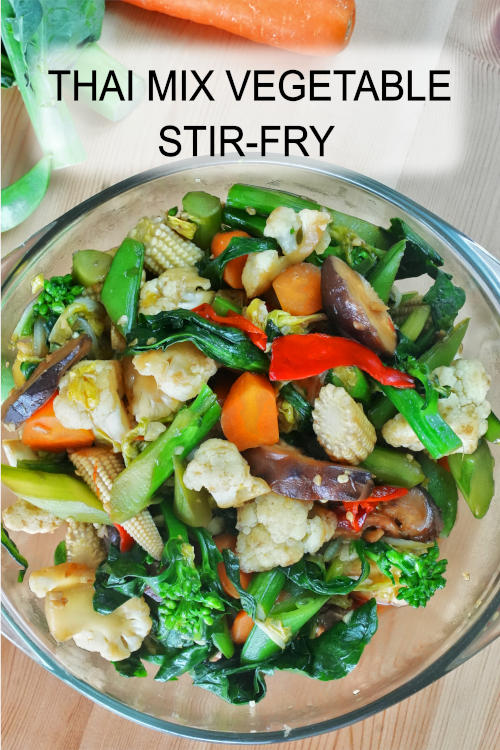
The Main Ingredients for the Mixed Vegetable Stir-Fry
To enhance presentation and flavor, consider the following:
- Utilize a variety of vegetables with different shapes and colors for an appealing presentation.
- Incorporate leafy greens, root vegetables, crunchy peas, and chewy mushrooms to create a delightful mix of textures.
- Don’t forget to add fish sauce and Golden Mountain sauce, as they are key in distinguishing Thai stir-fry from Chinese versions.
My Choice of Vegetables for the Recipe:
- Chinese broccoli (gai lan): The most common leafy vegetable in Thai stir-fry.
- Cauliflower: Adds color contrast and a different texture to the dish.
- Carrots: Included for a pop of color.
- Mushrooms: Both dry and fresh shiitake mushrooms work well; I prefer dry shiitake for its aromatic and chewy qualities (rehydrate before use).
- Snow peas: Crunchy and refreshing, they add an attractive shape.
- Cabbage: Contributes crunchiness and sweetness.
- Baby corn: Adds sweetness and color.
Note: Other suitable vegetables include red bell peppers, bok choy, yellow squash, green onions, water chestnuts, green beans, and Thai basil. You may also add protein like pork or chicken, although that would make it a non-vegetarian dish.
How to Prepare the Stir-Fry Sauce
- The primary difference between Thai and Chinese stir-fry lies in the use of fish sauce and Golden Mountain sauce, which are unique to Thai cuisine. Golden Mountain sauce is a soy sauce that is darker and more flavorful than Chinese light soy sauce, akin to Maggi seasoning.
- In addition to these sauces, I incorporate oyster sauce and sugar into the stir-fry sauce. You can use regular or brown sugar, and for a vegetarian option, substitute oyster sauce with vegan oyster sauce made from mushroom extract. Ground black pepper can also be added for extra flavor.
- Unlike Chinese stir-fry, Thai stir-fry does not use cornstarch slurry to thicken the sauce, resulting in a thinner consistency.
To prepare the sauce, mix all ingredients in a small bowl. I prefer to combine them before adding to the skillet to ensure nothing is overlooked.
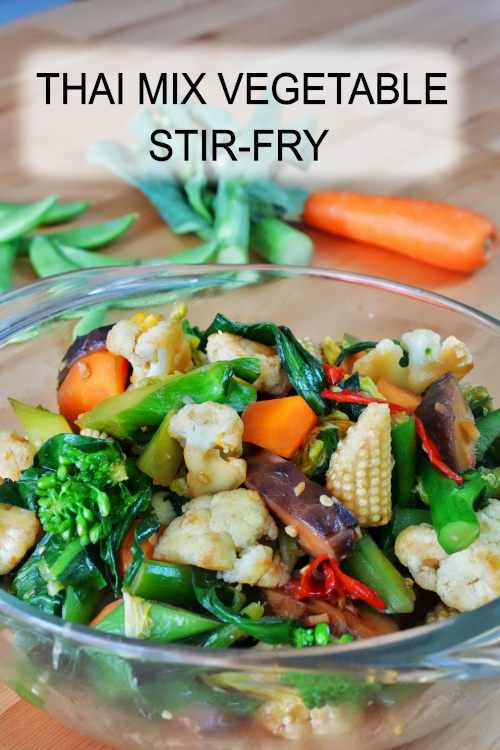
How to Stir-Fry the Vegetables
- Prepare the ingredients:
- Separate the leafy and stem parts of the Gai Lan, as they require different cooking times. Slice the stems on the bias into thin pieces if they are too large.
- Break the cauliflower into small florets for easier cooking.
- Cut the carrot into wedges by rolling it while slicing, or simply slice it thinly. All stir-fry ingredients should be cut into small pieces for quick cooking.
- Remove the fibrous string from the snow peas and cut each pea in half crosswise.
- Cut the cabbage into two-inch pieces.
- Chop a few garlic cloves and sauté them in vegetable oil over low heat in a wok or large skillet until fragrant. Garlic is essential in Asian stir-fries and can never be overdone!
- Add the cauliflower, cabbage, and carrots to the wok, as they require longer cooking times. Stir-fry for at least two minutes, adding a small amount of water if needed.
- After two minutes, add the Gai Lan stems and shiitake mushrooms, continuing to stir-fry.
- Incorporate the pre-mixed stir-fry sauce to allow the vegetables to absorb the flavors.
- Finally, add the leafy parts of the Gai Lan and snow peas, which cook quickly. Stir-fry over high heat for half a minute, and it’s ready to serve. This Thai vegetable stir-fry pairs wonderfully with jasmine rice.
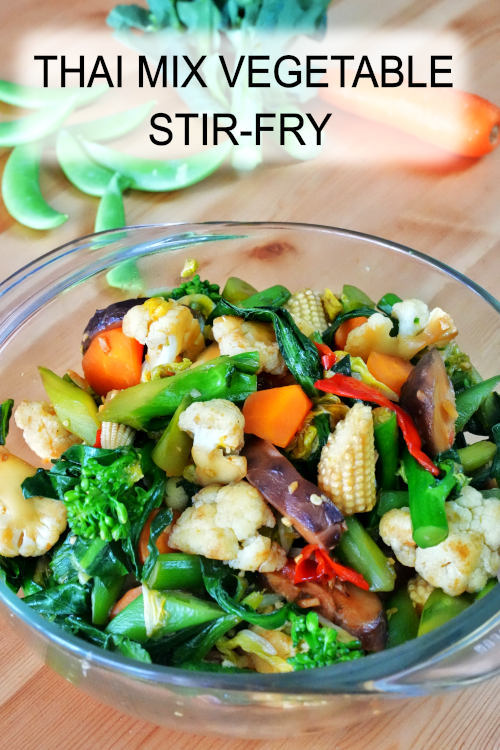
More Tips for a Better Thai Stir-Fry
- Use vegetable oil with a high smoke point, such as peanut, canola, or corn oil for stir-frying. Coconut oil is also a great choice for authenticity. Avoid olive oil as it has a lower smoke point and won’t deliver the true Thai flavor.
- If you enjoy spicy food, consider adding two or three Thai bird’s eye chilies. It’s best to bash them rather than chop, so you won’t accidentally bite into a fiery piece.
- For added flavor, drizzle some sesame oil over the vegetables before serving, if desired.
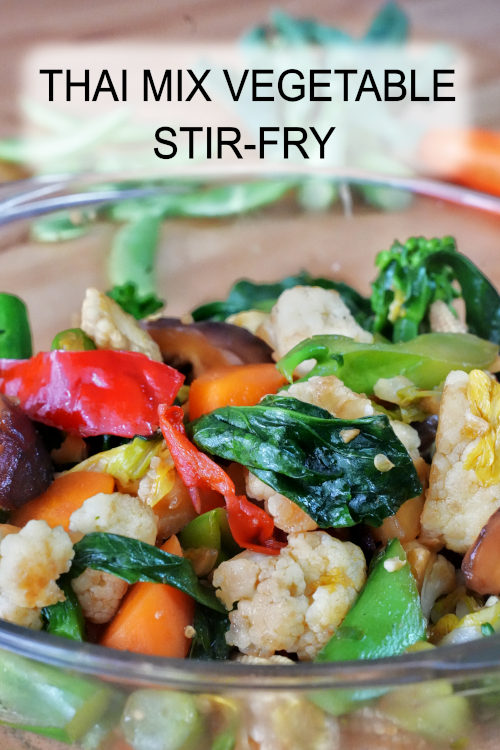
Other Thai Cuisines You May Want to Try
If you enjoy this simple stir-fry recipe, consider trying the following:
- Pad Thai: A traditional Thai stir-fried noodle dish that is a must-try for anyone new to Thai cooking.
- Thai Green Curry: A flavorful curry that I often serve simply alongside rice for a quick and delicious meal.


